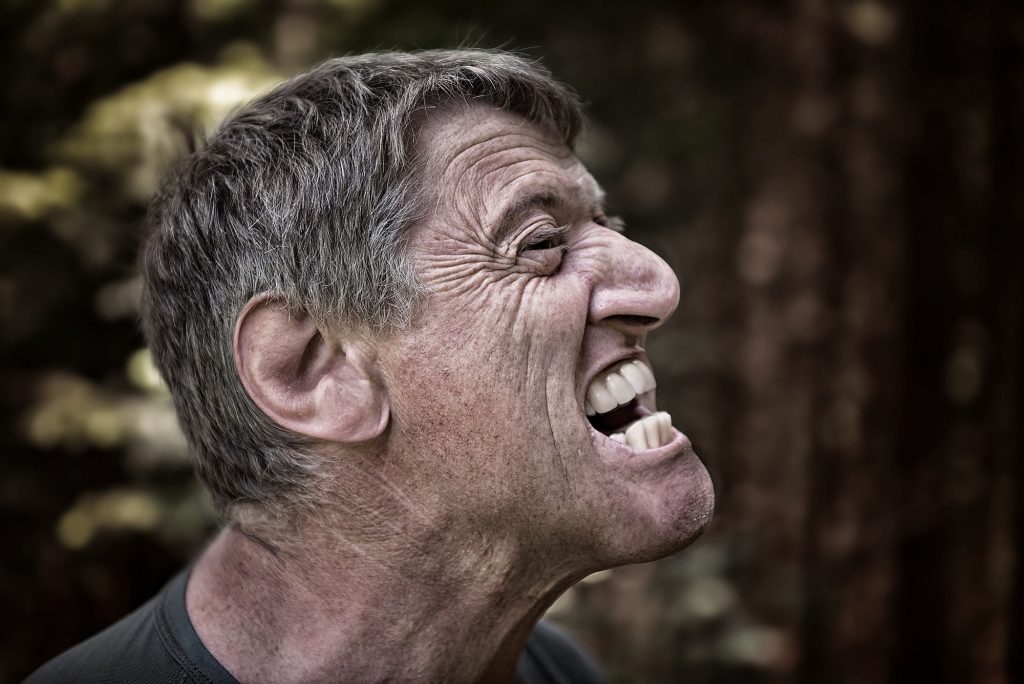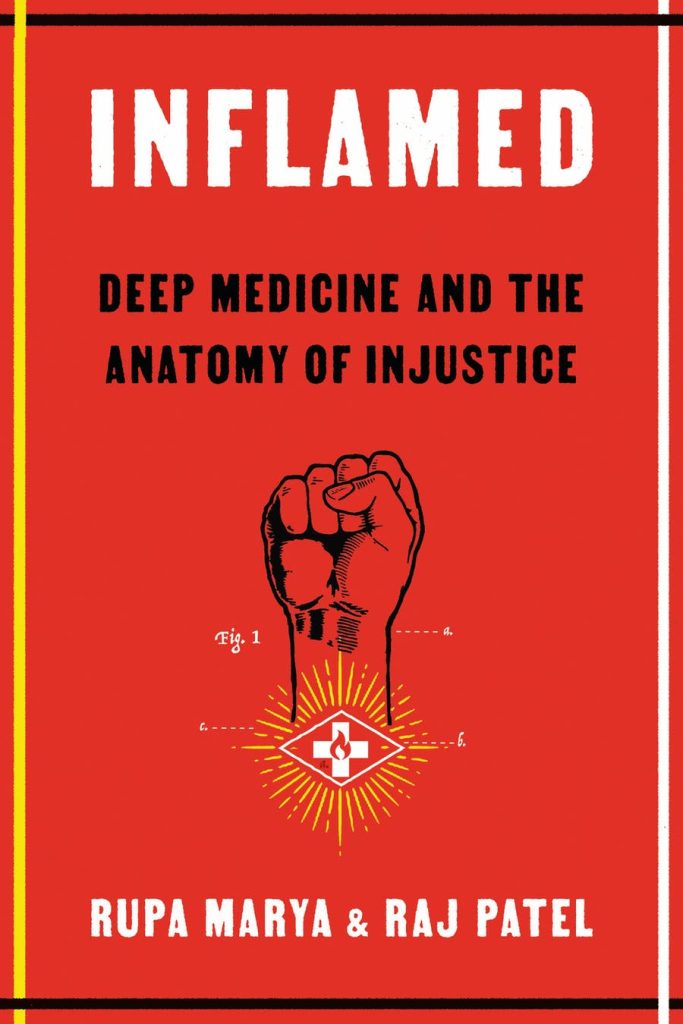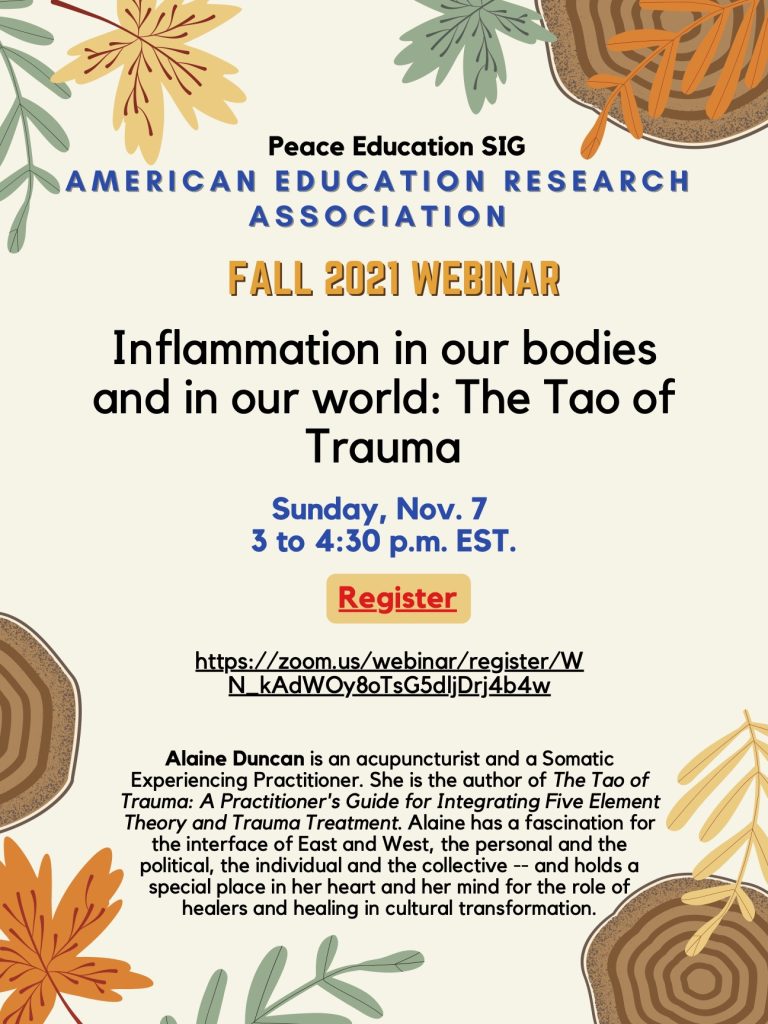Trauma Training Tip
There is considerable diversity of opinion about the CoVid 19 virus and vaccine. It may be one of the most divisive subjects in our highly polarized world.
While I am not a student of the anthropology of medicine, I do find it interesting how our understanding of the causes of illness and the foundations for health have changed over time. What is the best way to understand those who hold the vaccines dear and those who are hesitant? Can we find a “middle way” to have a conversation about how to keep ourselves and our communities safe from this highly contagious and deadly virus? Can we find a way to look at this issue that calls us together instead of polarizing us?
Early Chinese understanding was that “hungry ghosts” or disrespected ancestors, were the cause of disease. Today the study of epigenetics explains how our genetic expression can be influenced by the impact of trauma in our ancestors – we are indeed connected to those who came before us.
Later writings named “external causes of disease” – largely extreme and unseasonable weather conditions (put a hat on, you’ll catch your death of cold); and “internal causes of disease” – being consumed by excessive emotions (in a way not so dissimilar to modern psycho-neuro-immunology describing interactions between psychological processes and the nervous and immune systems), were understood to be the foundation for illness. They also named “Other” causes of disease – including weak constitution, injuries, poisons, over-exertion, and bad diet.
Underneath all of these assertions about the nature of disease is the central premise that all illness is influenced by the fundamental relationship between the strength of the pathogen and the strength of the host.
Modern medicine has explored the “germ theory of illness,” the “genetic theory of illness,” and now is growing into understanding illness through the lens of inflammation. This lens supports a very broad look at the nature of illness. It includes the relationship between our world on fire and our bodies on fire.
A great example is CoVid 19, an inflammatory illness. The difference between a mild and a fatal case comes down to being of advanced age or the presence of a pre-existing illness such as heart disease, inflammatory bowel illness, diabetes, obesity, cancer, or auto-immune illness – all of which share the phenomenon of high systemic inflammation. All of these inflammatory states have considerably higher rates in BIPOC and poor people. Chinese medicine would say: The pathogen is strong and the host is weak for people with systemic inflammation who become seriously ill or die of Covid.
Our inflammatory response is triggered when tissues or cells are damaged or threatened. In an ideal situation, when the threat abates, the inflammation subsides. However, if we don’t have time to recover before another insult lands, our inflammatory response never gets a chance to cool down. Hence the high rates of inflammatory illness in BIPOC and low-income trauma survivors who experience both micro and macro aggressions influencing autonomic nervous system function.
It’s a mirror of the Self-Protective Response – if we are able to move through all its steps, then the traumatic experience doesn’t leave its imprint in our tissues. If we experience additional threats before the last one has been fully digested, the sense of threat accumulates into growing dysregulation. Same thing with our inflammatory response.
There are inflammatory states in the world that also influence our bodies. In fact, the growing rates of inflammatory illness reflects the growing rates of inflammation in our world. Global temperatures are rising, forest fires are destroying the regulating influence of forests, and political demagogues have fertilized distrust and hatred. Understandably, tempers are flaring.
Movements for racial reckoning, women’s control of reproductive rights, respect for indigenous peoples, and our planet are movements against the foundations of an inflamed world and for the health and welfare of all living things. Healers have an important role to play in helping people oppose these inflammatory social dynamics without contracting in body/mind/spirit.
I want to affirm that vaccines are helpful and safe for most of us. We need them and I salute the scientists who developed them in record time. And – there is another lens to look at Covid 19 through.
While the burden of any one of these inflammatory illnesses is felt profoundly personally – it is also an expression of a larger social dynamic. Our individual healing is connected to healing our society, and its ecosystems. Perhaps forest fires in the West are affecting the quality of air in a way that is creating arousal in your lungs? Perhaps toxic chemicals in the effluent from a nearby factory are impacting your endocrine system? Maybe micro-aggressions based on your race, sexual or gender identity, or your immigration status is causing “death by a thousand paper-cuts” in your auto-immune system. All disease is both individual and social. You may be carrying too heavy a burden of self-blame for your experience of health and wellness. We heal in the context of relationship. You needn’t carry it alone.
Looking at illness through the lens of inflammation rather than the “war-time” imagery of doing battle with pathogens may help call us together around the healing of our world as well as ourselves. We are all served by transforming the impact of white supremacy, patriarchy, global warming, and the accumulation of excess wealth in a handful of people on our social as well as our individual health, welfare, and lived experience. These movements are helping to restore our body’s capacity, along with our world’s capacity, to manage inflammation and enhance health.
Interested in more on this subject? Read Inflamed: Deep Medicine and the Anatomy of Injustice, by Rupa Marya and Raj Patel – or hear about it on Youtube.
I’ve said it before and will say it again “Our nation, our world, needs its healers.”
Alaine’s Two Cents
Heather Haslem of the Center for the Application of Substance Abuse Technologies (CASAT) at the University of Nevada, Reno is the host for their CASAT Conversations podcast series. She explores the complex impact of our environment, behaviors, and actions on our health and wellbeing.
She is especially interested in exploring resilience for primary and behavioral health providers.
I was delighted to be interviewed on the subject of “Addressing Burnout Through Integrative Medicine.” You will hear some of the core principles of the Tao of Trauma approach to healing the impact of traumatic stress – and some of the experiences that led me to write it. Listen in here and let me know what you think!
Check This Out!
The American Education Research Association’s Peace Education Special Interest Group has invited me to present their Fall Webinar: Inflammation In Our Bodies and in Our World: The Tao of Trauma.
Tune in on Sunday, November 7th from 3-4:30 pm, Eastern. It is both virtual and free – but you do need to register, using this link.
Clinical Curiosity
Where is your clinical curiosity carrying you?
Send me a question or two and I will explore them with readers in this corner next month.
Q. I wonder if you would write some about self-care for clinicians? I am a nurse at a major urban medical center. I’ve been placing PICC lines in vulnerable patients all through the pandemic. The operational tempo is very high, with very sick people in our care. The catheter placement needs to be very precise, because it comes so close to the large veins around the heart. I’ve gained 40 pounds, and have such pain and inflammation in my hands and wrists that I am out on sick leave, hoping rest will restore my hands to function.
A. First off – thank you for your service! Oh my goodness, you and other front-line health care workers have given so much over the course of the pandemic! It’s no wonder that you have developed these all-too-common expressions of inflammatory illness. I’m glad you are able to get some workers-compensation time for self-care.
Your best resource will be a provider who practices what I call “vibrational medicine” – that could be an acupuncturist, a cranio-sacral therapist, or a somatically-oriented psychotherapist who is trained and has an orientation towards restoring your core regulation rather than simply attending to symptoms.
When we find ourselves in an ongoing, constant state of even low-level arousal, our capacity to move through the normal rise and fall of our inflammatory response is compromised. We respond to danger or threat with sympathetic arousal and a protective, inflammatory response. Part of this response includes compromising the function of our guts. We need all our energy for mobilizing a response to this threat, and will divert energy for digesting and assimilating nourishment for another time. Instead of transforming food into energy, we accumulate excess weight around our middle.
Our mobilization response makes good use of our tendons, muscles, and ligaments to respond to danger or threat. Your wonderful hands have carried so many experiences of danger that they have landed in a chronic braced and/or collapsed state. This can be very painful and will necessarily be highly inflamed.
Please don’t expect yourself to “go it alone.” Make use of a skilled companion to help you restore your core regulation and reduce the levels of systemic inflammation that your good body and good hands are carrying.
All good wishes!






